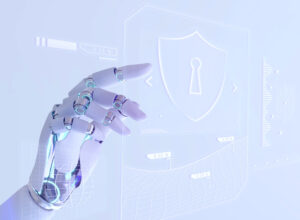
Mining cryptocurrency is a huge business. Just last year, Beijing-based crypto-miner Bitmain made over $3 billion dollars in profits. In a novel approach, French startup Qarnot is helping everyday consumers get involved, and the company is doing so by utilizing something that’s usually regarded as a (big) problem for cryptocurrency miners: heat. By harnessing the heat graphics processing units (GPUs) generate while mining, Quarnot’s QC-1 crypto heater keeps users warm and mines cryptocurrency at the same time.
According to Qarnot, the QC-1 takes just ten minutes to set up. It connects online via an Ethernet cable, and owners can monitor its mining progress or activate a heating booster using a companion app. Also of note: the manufacturer doesn’t take a cut of the cryptocurrency the QC-1 mines.
“The heat of your QC-1 is generated by the two graphics cards embedded in the device and mining cryptocurrencies or blockchain transactions: While heating, you create money,” the QC-1 product description reads. “You can watch in real time how crypto markets are trending, on your mobile app and on your QC-1 LEDs.”
The QC-1 crypto heater is a wall-hanging unit that looks like a black radiator adorned with a grill and wooden top. Housed inside are two AMD NITRO+ RADEON RX 580 GPUs. By default, the unit mines Ethereum, but users can direct the device to mine other cryptocurrencies too.
The company estimates their crypto heater can mine an average of $120 worth of the coin per month. The problem is that the rig costs €2,900 ($3,570). Looking at the math, users will have to run the QC-1 all day every day for more than five years before it pays for itself (as per current Ethereum prices).
Crypto Heaters
The QC-1 isn’t the first device of its kind. Russian startup Comino sells two similar mining rigs that double as heaters: the Comino N1, which mines Ethereum, and the Comino N4, which mines Zcash. Both sell for €4,999 ($6,150).
It’s worth remembering that devices like these can only mine cryptocurrencies — they doesn’t include a hard drive or an operating system, so no gaming or emails. And considering that the QC-1 costs almost $3,600, one could theoretically just buy a high-end gaming PC with two comparable cards inside and set them up for cryptocurrency mining.
That said, as a proof of concept the QC-1 is certainly notable. Using excess heat from cryptocurrency mining to provide heat for users is a great idea. Mining generates a tremendous amount of heat and putting it to good use could help make the idea of mining cryptocurrency more approachable to mainstream consumers.











